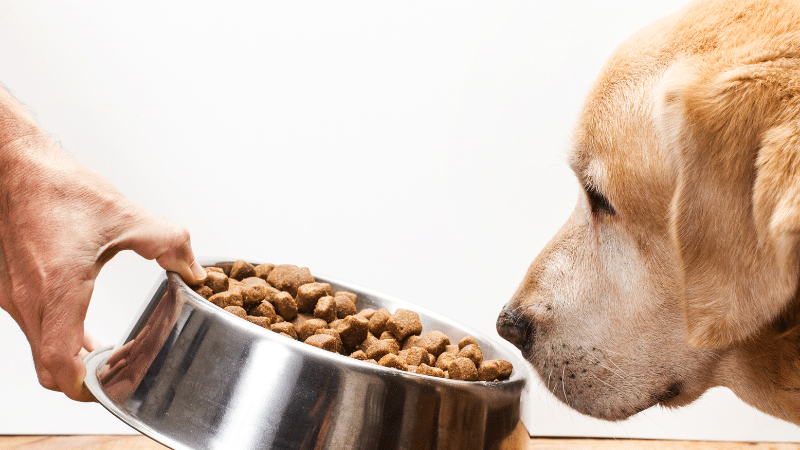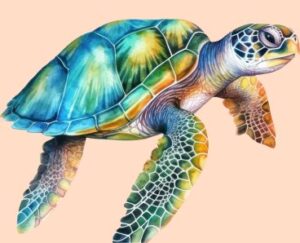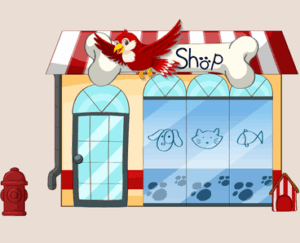The Saluki is one of the oldest known ancester pets dating back to 329 BCE, which means it existed even before the Egyptian pyramids were built. Cherished for their sleek yet powerful physiques, Salukis were widely adored by royals and even had standing in Egypt where pharaohs valued these creatures so much they would mummify them alongside their owners for an afterlife as companion.

Salukis are tall, thin, ancient pets that can reach up to 28 inches at the shoulder being able to weigh from 40 to 65 pounds. Their dignified appearance is what distinguishes the breed, silk, feathered ears, and long, narrow heads along with curved and separated tails. Their overall physique gives off an impression of a greyhound, but does have longer hair, mainly on the tail and ears.
Due to having an elegant nature and unmatched speed paired with royal bearing Salukis were revered throughout the years as status symbols.
Caring for a Saluki
Salukis are affectionate and love to cuddle with family. They, however, are aloof with strangers and may take a while to warm up to new faces. Salukis are best kept in homes occupied by older kids and adults who understand that these pets like to play at their own time and pace.
To keep fit and happy, these dogs need at least two hours of exercise each day. They enjoy running outdoors and taking advantage of their powerful legs, but calm and relaxed Salukis can usually be found indoors.
Salukis have two coat types:
- The feathered Saluki has longer hair on the ears and tail, while
- The smooth Saluki has short fur that sheds less than the feathered variety.
Saluki Health Issues
The Saluki is one of the healthiest breeds, with the ability to live up to 17 years. This dog may, like all breeds of dog, be prone to some health conditions. We will discuss critical health concerns based on veterinary and scientific data.

Dental Disease
Genetics predispose Salukis to suffer from early-onset dental disease34. Preventive measures include:
- Brushing the dog’s teeth daily with a toothbrush and toothpaste recommended by a veterinarian.
- Giving a dental cleaning under anesthesia every year, performed by a qualified veterinarian
Dilated Cardiomyopathy (DCM)
Weakened pumping ability of the heart and its enlargement, a condition known as DCM, is a concern in Salukis
- Symptoms: Rapidly beating heart, extreme fatigue, incessant coughing, collapsing, and losing weight
- Diagnosis: This can be diagnosed with echocardiography, thoracic radiography, or blood tests
- Management: It is possible to enhance the function of heart failure and regulate the heart with appropriate medication. Cardiovascular screenings are also encouraged because of the heart conditions common in the breed
Gastric Dilatation-Volvulus (GDV)
Salukis and other breeds with deep chests are likely to suffer from GDV, a twisting of the stomach that rotates around itself
- Emergency signs: Unproductive stretching, stomach enlargement, and restlessness
- Treatment: Surgery is required to correct the torsion
Neuronal Ceroid Lipofuscinosis
An affected hound suffers from blindness, seizures, and becomes disoriented. These are symptoms of this hereditary and neurodegenerative disorder.
- Genetics: The disease can only be passed on to the child if both parents have it
- Prevention: The genetic testing of breeding pairs is of utmost importance.
Hip Dysplasia
In comparison to other breeds, Salukis possess a low occurrence rate of hip dysplasia (under 2%)
- Symptoms: Lameness, “bunny-hopping” gait, and reluctance to jump
- Management: Controlling weight, anti-inflammatory medications, and joint supplements
Cancer
Salukis are prone to some of the more aggressive cancers:
- Lymphoma: Improved outcomes with early detection and treatment via chemotherapy
- Hemangiosarcoma: Surgery is palliative but seldom curative; typically impacts the spleen, liver, or heart
- Mammary Cancer: Spaying before the first heat cycle minimizes risk
Preventive Care Recommendations
- Cardiac Screenings: Consultations and yearly echocardiograms with board-certified cardiologists for adult breeders
- Thyroid Monitoring: Salukis may show lower values for thyroid hormones; testing should follow breed-specific reference ranges
- Diet and Exercise: Regular physical activity and high-quality food to maintain a low body weight enhance joint health and minimize risks
What to Feed a Saluki
Salukis require a nutritionally balanced diet tailored to their life stage, activity level, and health needs. Here’s a breakdown of evidence-based feeding guidelines.

How To Feed a Saluki
- Best Protein Sources: Chicken, turkey, beef, and fish all offer great animal-based proteins that help with energy and muscle maintenance. Ensure at least 18% protein (dry matter basis) for adults and 22% for puppies.
- Healthy Fats: To help coat, condition, and lubricate joints, add omega-3 and omega-6 fatty acids (such as salmon oil).
- Low Carbohydrates: Avoid fillers such as corn and wheat. Include carbs from veggies and berries, but ensure moderation.
How Much Should You Feed a Saluki?
- Serving Size and Diet:
- Adults: 2.75 cups of high-quality kibble daily, split into two meals.
- Raw Diet: 320-640g depending on weight (16-32kg).
- Puppies: Use a specially formulated puppy food with 22% protein and 8% fat until 12 months, then start switching to adult food.
- Seniors: Add joint care ingredients like glucosamine, and switch to lower-calorie, easier-to-digest options.
- Concerned with Obesity: Measure portions and limit treats to 10% of daily intake.
- Maintaining Proper Hydration: Provide water at all times. Raw diets (70% moisture) help maintain hydration.
- Joint Health: Add joint supplements as early as possible for active adults to reduce inflammation.
- Raw Food: Meats, bones, and offal resemble natural canine diets and improve dental health and digestion.
- Commercial Kibble: Pick up Royal Canin or Scrumbles for medium breeds. Look for prebiotics that aid gut health.
Nutritional Tips for Salukis
- Feed separately from other pets to avoid food competition
- Avoid human foods and fatty snacks; use kibble as training rewards
- Consult a vet for personalized portion sizes and supplement advice
Saluki Behavior and Care Guide
Saluki Personality and Temperament
Salukis flourish in tranquil and serene surroundings where they associate strongly with adult figures. However, their cautious temperament makes them somewhat distant from younger children. Though cordial with older children who give them the privacy they require, families with toddlers may struggle with their indifferent attitude. To cope with other dogs, socialization must be done at a very young age, though an overwhelming urge to chase smaller animals like cats or rodents will make them susceptible to attack.
Saluki Training
Salukis are renowned for their fierce independence. Coupled with the fact that they do not deal well with harsh discipline, this leads to the conclusion that they are best trained using positive reinforcement techniques (treats and praise). To prevent stubborn attempts at Shaping techniques, the Saluki Club of America recommends puppy obedience classes. To avoid separation anxiety or destructive behaviors when left solitary, it is advised that they be crate trained. For more guidance, certified trainers are available at the Certification Council for Professional Dog Trainers.
Fun Activities for Salukis
To keep a Saluki active both mentally and physically, it is essential to provide it with two or more hours of exercise daily.
- Lure Coursing: A mechanical lure is used to simulate hunting and coursing chasing.
- Agility Training: Increases compliance training and makes use of their strong athletic abilities.
- Walks/jogs: Longer sessions are better and are best tailored for adults who have been leash trained and are in safe surroundings.
- Puzzles and scent work: These toy types and others can be used in interactive competitions to help stave off lack of stimulation.
Saluki Grooming Guide
- Coat: Maintenance includes brushing 1-2 times weekly while concentrating on the feathering to prevent mats on the tail and ears. A snood can be donned during meals as protection.
- Baths: Only clean when visibly dirty and use mild shampoo devoid of unnatural elements.
- Ears and Eyes: Wipe the eyes with caution to keep the skin under the eye free from marks related to tears in a gentle manner. The ears need cleaning after a bath with a nurse-approved drying solution.
- Nails/Dentals: Clip nails once a month, along with brushing teeth 2-3 times weekly.
The salt and pepper Wagh pointers, while loyal and caring, require some deep consideration, which prospective owners need to take time to ponder with a lot of thought pouring in. These sighthounds need a specifically suited surrounding and a pointed effort in meeting their physical activity and emotional requirements. Using information from vets and resources provided for practitioners in lieu of services required from the pointers makes strikingly clear what the need demands when looking for an owner ,considering looking for pointers.
Saluki vs. Greyhound: Key Differences
Feature | Saluki | Greyhound |
Temperament | Reserved, aloof, sensitive | Social, adaptable |
Speed | 42.8 mph (long-distance endurance) | 40 mph (short bursts) |
Weight | 40–65 lbs | 60–100 lbs |
Child-Friendly | Prefer older children | Less tolerant of young kids |
Cost and Health Considerations
- Purchase Price: $400–$5,000+ (varies by lineage and breeder reputation)
- Common Health Issues:
- Dilated cardiomyopathy (DCM) and hip dysplasia
- Annual cardiac screenings and joint supplements are recommended
- Lifespan: 12–17 years with proper care
Considerations for Pet Parents

Level of Experience
These pets are not recommended for beginners because of their strong-willed nature. Training will take time, and the owner must understand the tenets of positive reinforcement.
Home Environment
This breed will require a minimum 6-foot fenced yard that is securely fenced. This is so they can sprint at high speeds. An apartment will not be suitable without a vigorous exercise schedule.
Family Compatibility
Salukis should only be kept in adult only homes or in homes with older children as these children need to understand and respect that these dogs are quiet and calm.
Highly active households with small pets such as cats and rabbits should refrain from adopting one of these pets, as most salukis will want to chase them around.
Physical Activity Needs
At least 2 hours a day of physical activity such as running, agility, or lure coursing is needed in order to prevent boredom and destructive behavior.
Compared to other pets, salukis do tend to suffer from separation anxiety. Putting them in doggy daycare, hiring a pet sitter, or having the home occupied will ease the stress while being alone for long periods.
Frequently Asked Questions
Best for calm households with older children or adults
Up to 42.8 mph, making them among the fastest dog breeds
Yes, Saluki dogs can be good pets for experienced dog owners who understand their needs. They are gentle, loyal, and intelligent but require plenty of exercise and space. They may not be ideal for families with small children or first-time dog owners.
The Saluki dog originates from the Middle East, where it was bred by ancient nomadic tribes for hunting. Known for its speed and endurance, it was used to chase game across deserts.






